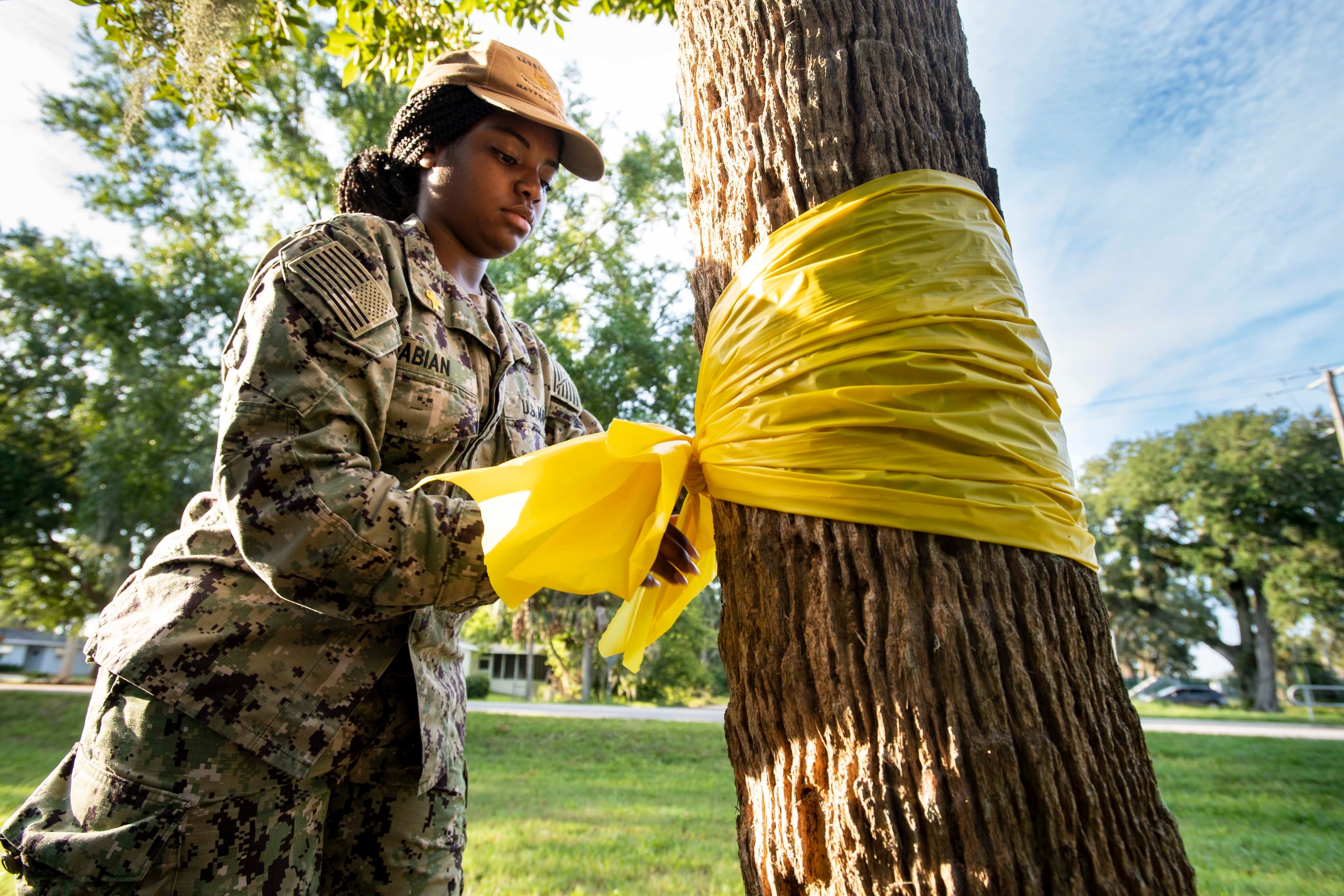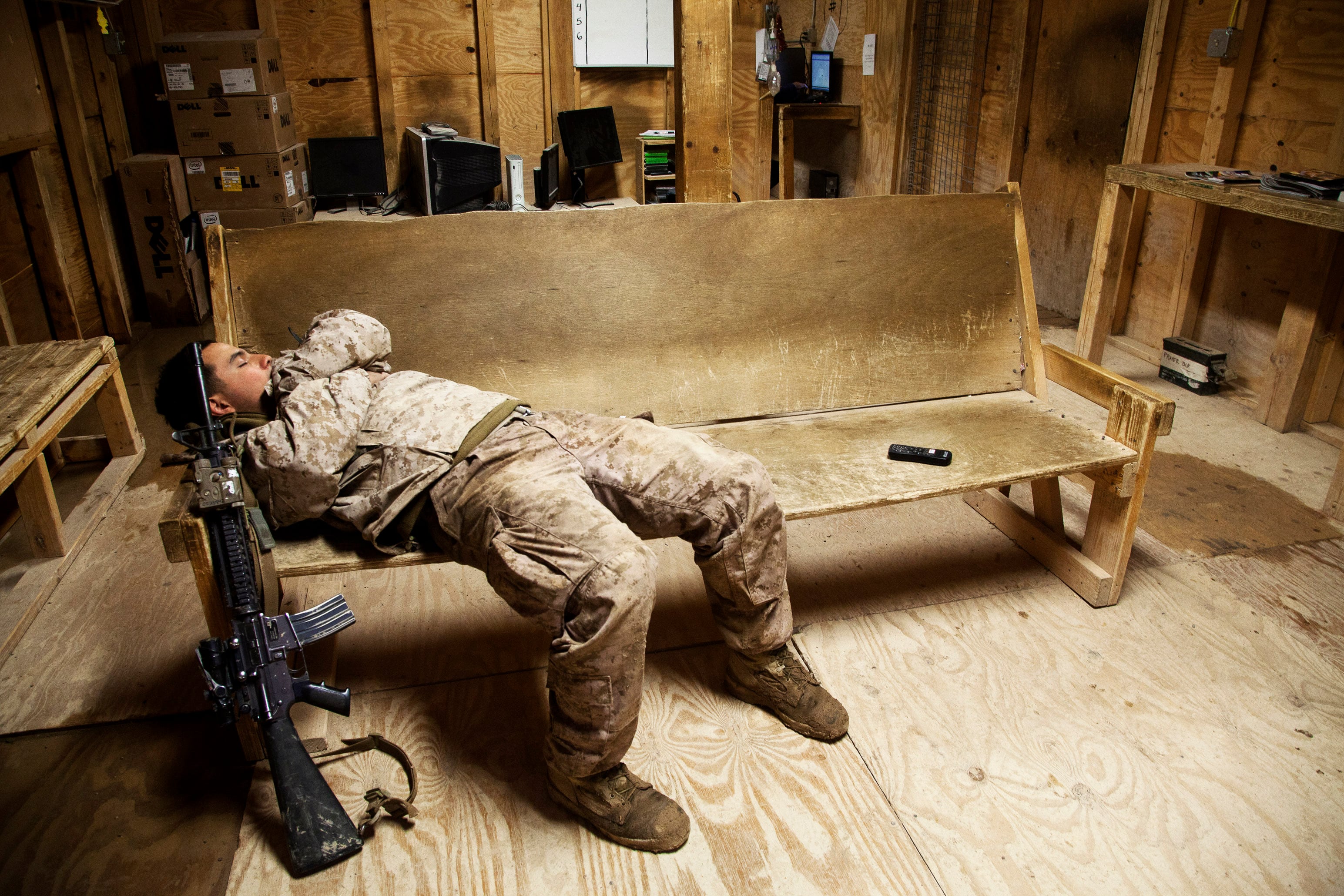The suicide rate among active-duty troops and veterans has outpaced the also-rising rate in the general population in recent years, but with so many risk factors inherent to military life, it’s difficult to pin down why.
There’s no one reason for it, according to a study released Monday by the Costs of War Project, and the way the Defense Department and VA track suicides might mean even their growing numbers are incomplete.
“The report notes that the increasing rates of suicide for both veterans and active duty personnel are outpacing those of the general population ― an alarming shift, as suicide rates among service members have historically been lower than suicide rates among the general population,” according to a news release.
Per researchers’ estimates, 30,177 Global War on Terror veterans have died by suicide, compared to 7,057 who have died while deployed in support of the Global War on Terror.
There are myriad stressors endemic not only to combat deployments, but also to military service, that may contribute to the rising suicide rate.
“There are clear contributors to suicidal ideation like high exposure to trauma — mental, physical, moral, and sexual — stress and burnout, the influence of the military’s hegemonic masculine culture, continued access to guns, and the difficulty of reintegrating into civilian life,” according to the report. “In addition to these factors, it is imperative we also consider the impact of the military’s reliance on guiding principles which overburden individual service members with moral responsibility, or blameworthiness for actions or consequences, over which they have little control.”
RELATED

The report explores a wide variety of factors, some as straightforward as the trauma of combat, but also others, such as advancements in health care that have not only allowed more troops to survive injury, but allowed them to continue to deploy over and over, racking up more physical and mental trauma.
“For example, since the post-9/11 wars began, we have seen a tremendous rise of improvised explosive devices (IEDs) in warfare, significantly increasing the number of traumatic brain injuries (TBIs) and polytrauma cases among service members,” according to the report. “TBIs have affected as many as 20 percent of post-9/11 service members, with many experiencing more than one during their career.”
Twenty years of combat operations might also be a factor.
“Simultaneously, the length of the war and advances in medical care have allowed service members to redeploy after severe physical trauma,” according to the report. “These compounding traumas contribute to worsening suicide rates as service members deploy and redeploy after sustaining severe injuries.”
And even for those who haven’t been injured, or even seen a firefight, the constant fear of IEDs is enough to seed post-traumatic stress that can be more and more of a problem down the line.
But deadly deployments are still not a satisfactory explanation, according to the report. Combat deaths have been falling steadily since 2007, the study notes, as suicide rates have continued to rise.
And numbers of troops deployed to Iraq and Afghanistan have dwindled from hundreds of thousands to just a few thousand troops, the DoD reported some of its highest suicide rates in 2018, 2019 and 2020.
There’s also the general demands of military life to consider, from long hours and separations from families to, notably, the prevalence of sexual trauma.
There’s also a culture that values pushing distress aside in service of the group, putting the mission above any one person’s needs, despite a decade of ever-increasing research, support and an attempt to de-stigmatize struggles with mental health.
“Military life is exhausting, and the high operational tempo limits time for reflection,” according to the report. “Further, the dominant masculine identity that pervades the military is one that overwhelmingly favors machismo and toughness. Asking for help during trauma or suicidal ideation, then, is necessarily at odds with military culture; ‘acknowledging mental illness is likely to be viewed as a sign of weakness and a potential threat to their careers.’ "
RELATED

Even so, there is a disconnect somewhere, between currently serving troops and veterans.
DoD data shows that the majority of active-duty suicides are carried out by service members who have never deployed. Suicides among veterans, however, are much more common for those with combat experience.
It’s possible, then, that the snowballing effects of post-traumatic stress and traumatic brain injuries ― two key risk factors for suicide ― might not come to a head until after a service member has separated, when their sense of belonging and mission gives way to a search for a new identity, where many feel isolated from their civilian friends and family.
“The VA 2020 National Veteran Suicide Prevention Annual Report reveals the suicide rate of veterans overall and adjusted for age and sex is 1.5 times that of the general population,” according to the report. “This rate is likely a conservative one because, unlike earlier reports, the VA only counts veterans who were federally activated, leaving out reservists and National Guardsmen who were not federally activated.”
Similarly, DoD’s numbers may be off for active-duty suicides, “by as much as half,” according to the report, because of the way it investigates and determines whether a death is a suicide.
“For example, the DoD may not count overdoses, single-vehicle wrecks, weapon misfires, and the like as completed suicides; reconstructing a narrative of suicide is prone to error,” according to the report.
While the Defeat ISIS mission will continue in Iraq, the end of the war in Afghanistan might give the the services a chance to reset and reevaluate.
“The military needs to promote help-seeking attitudes and frame them positively,” according to the report. “Accordingly, medical screenings for PTSD, TBIs, depression, and suicidal ideation must be universal, communicated across all channels, and taken seriously. That polytraumas and repeated TBIs are so commonplace should motivate changes in if and how service members are redeployed.”
Meghann Myers is the Pentagon bureau chief at Military Times. She covers operations, policy, personnel, leadership and other issues affecting service members.





